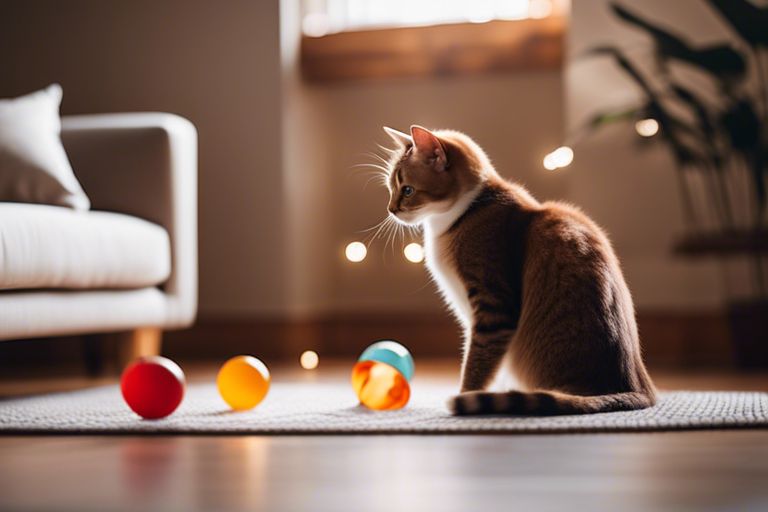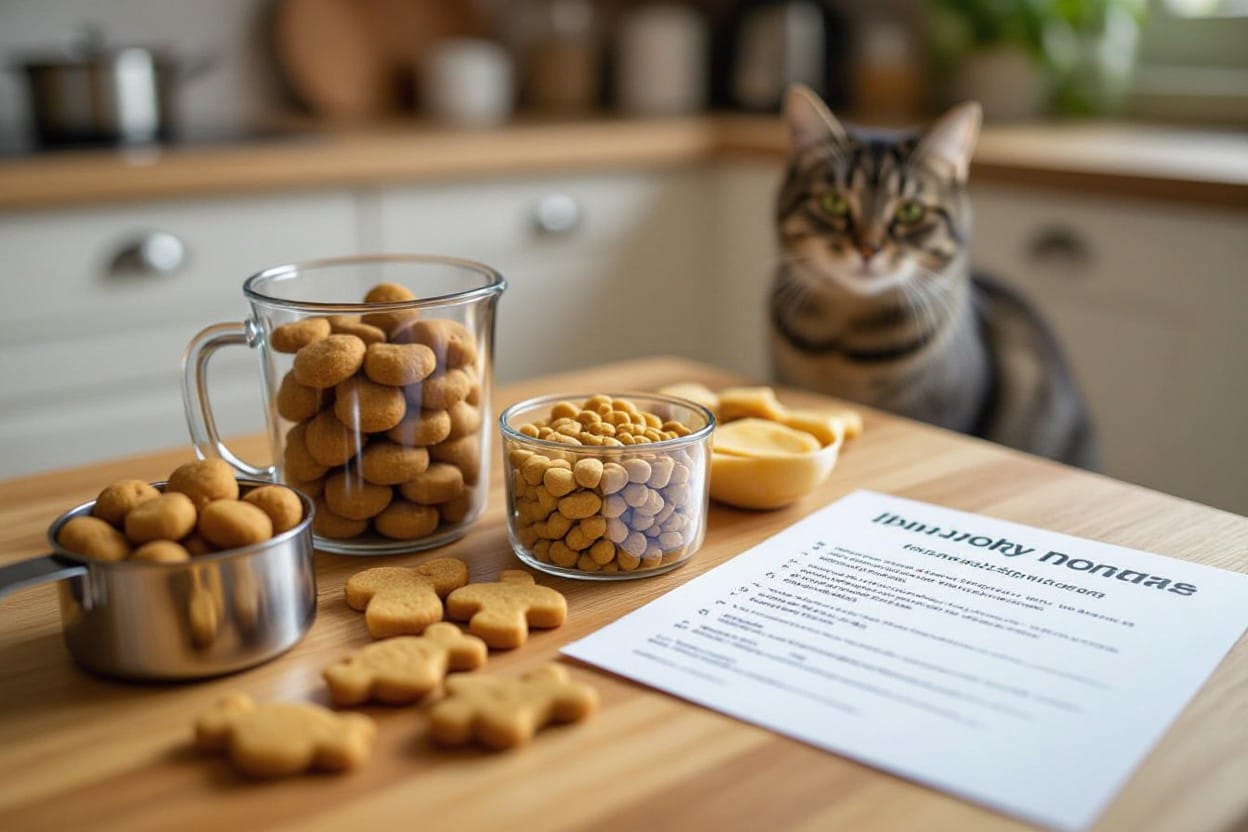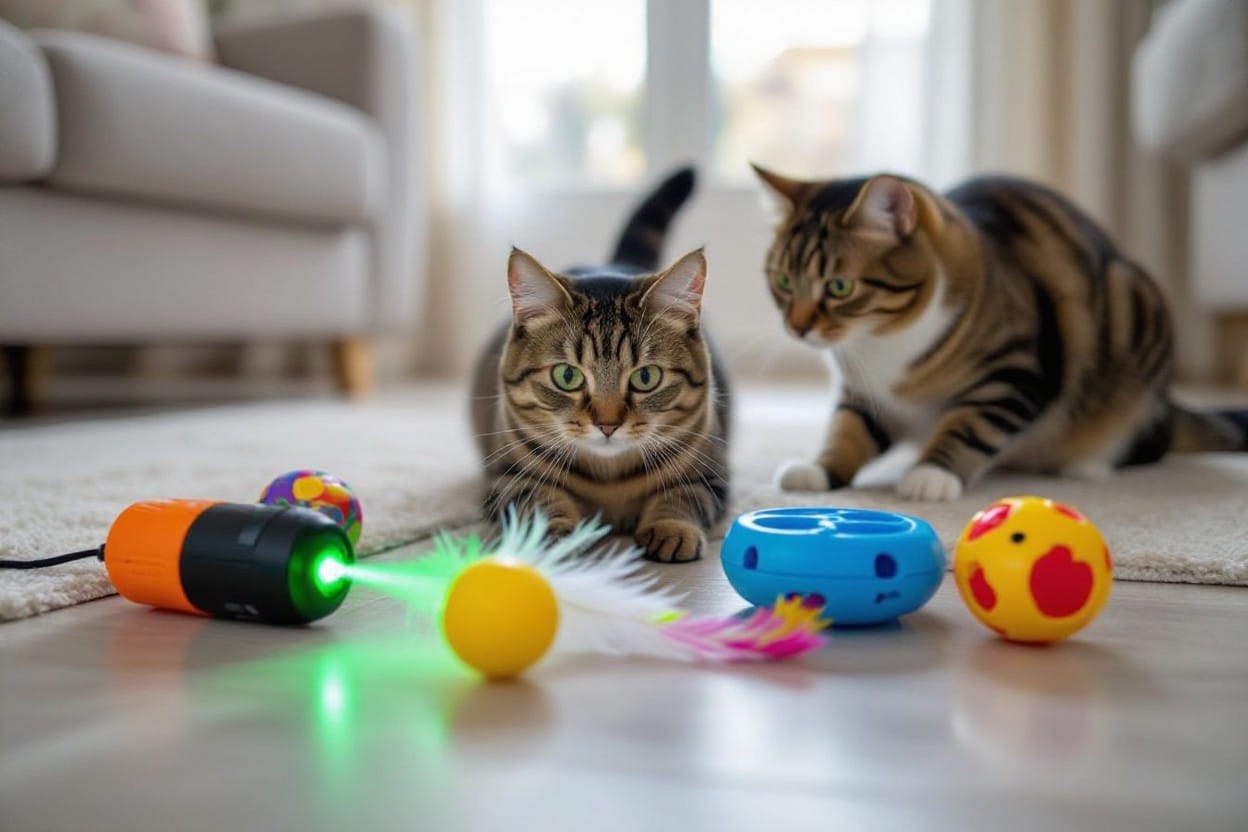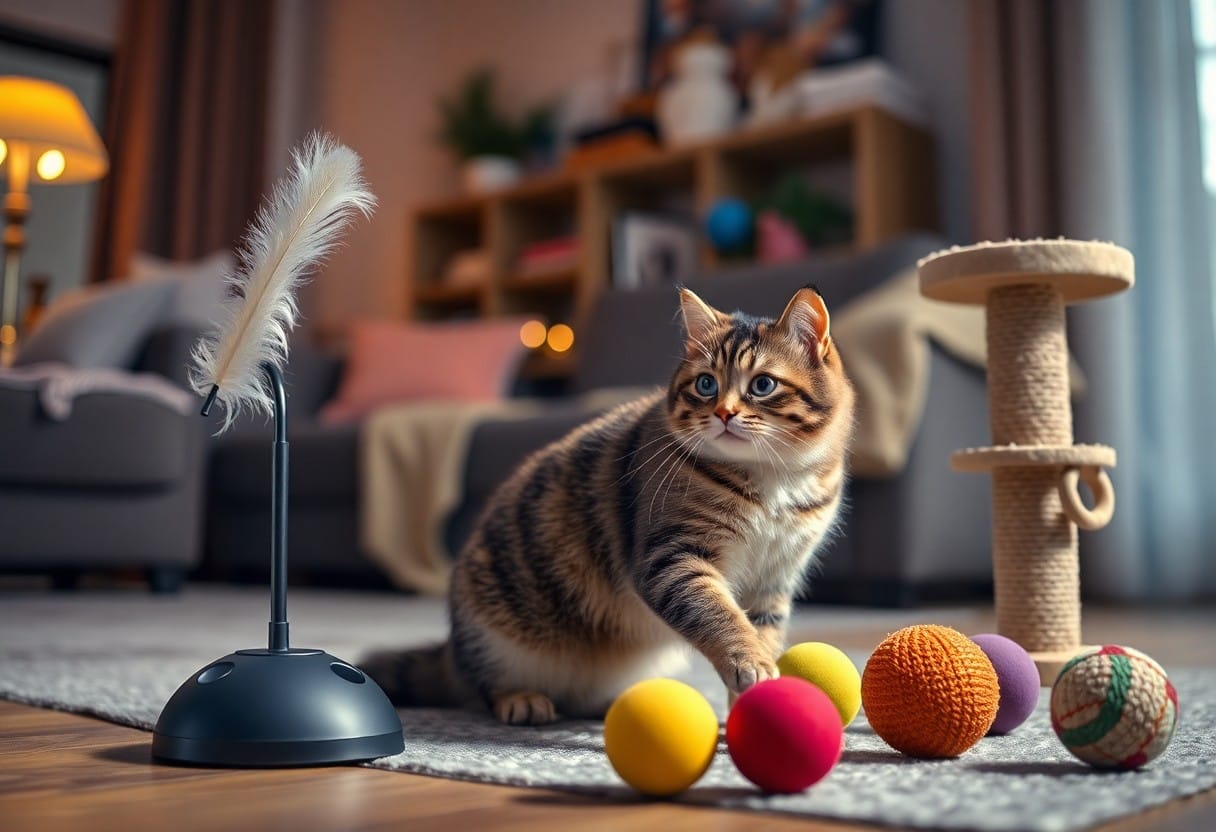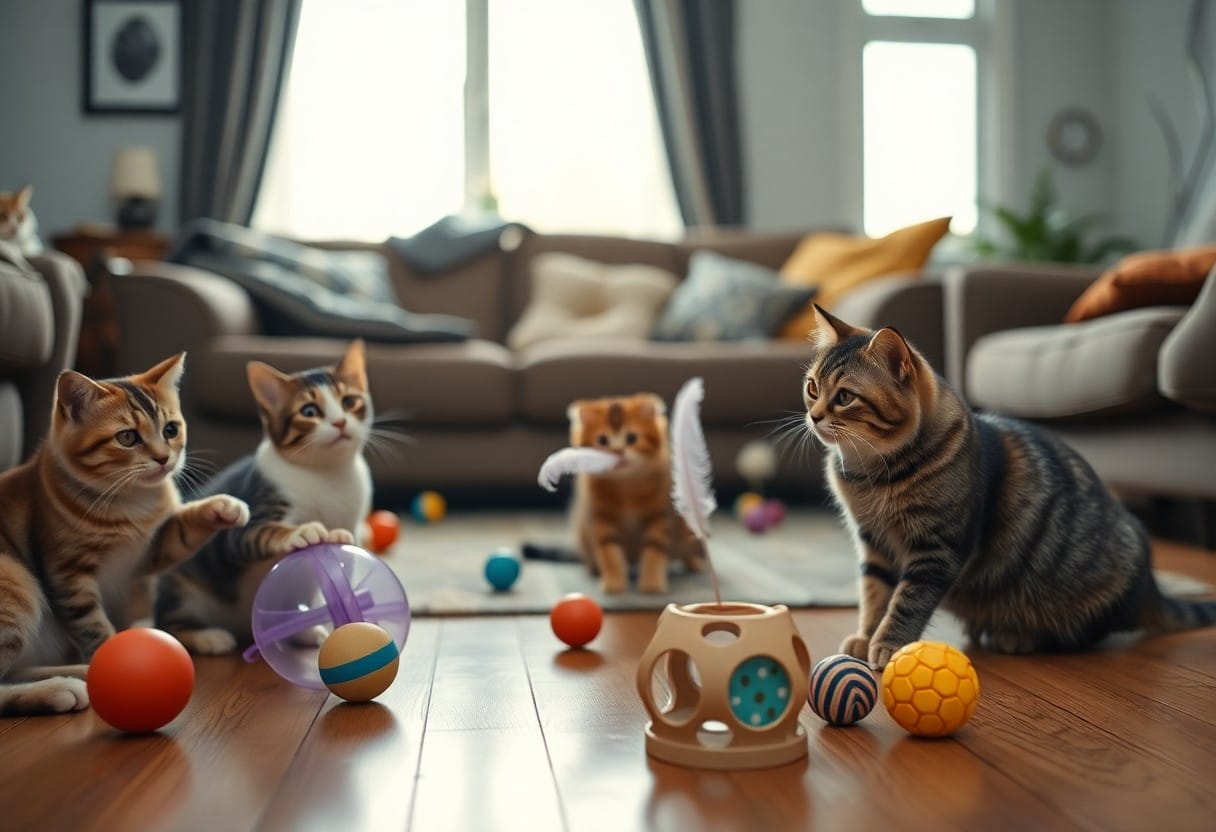Exercise plays a crucial role in the overall health and well-being of your feline friend. Regular playtime and physical activity are important for maintaining a healthy weight, preventing obesity, and keeping your cat mentally stimulated. In this blog post, we will research into the numerous benefits that come with incorporating regular exercise into your cat’s daily routine.
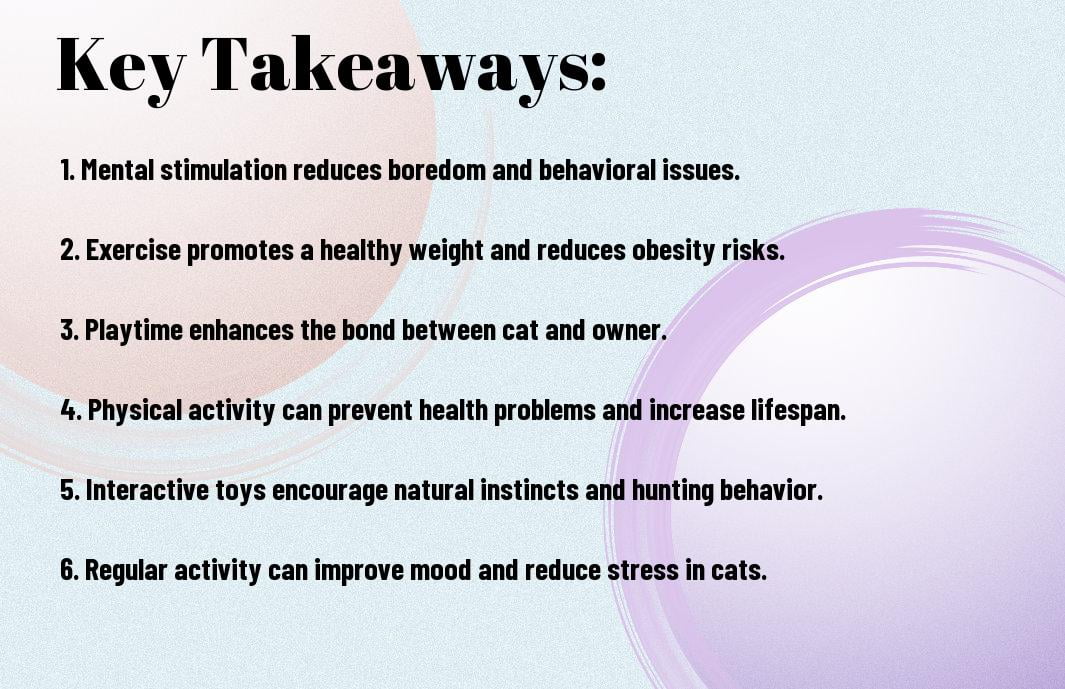
Physical Health Benefits
Weight Management
Little playtime and exercise sessions throughout the day can help your cat maintain a healthy weight. Obesity in cats can lead to various health issues, such as diabetes, arthritis, and heart disease. By engaging your cat in physical activities, you can help them burn off excess calories and prevent weight-related problems.
Improved Digestion and Metabolism
Any regular playtime can improve your cat’s digestion and metabolism. Physical activity stimulates the digestive system, helping in the breakdown and absorption of nutrients. A well-functioning metabolism is crucial for your cat’s overall health and can prevent issues like constipation and obesity.
On top of that, playtime can also alleviate stress and anxiety in your cat, which can further aid in proper digestion and metabolism. A happy and relaxed cat is more likely to have a healthy gastrointestinal system.
Development and Maintenance of Muscle Tone
With regular play and exercise, your cat can develop and maintain strong muscle tone. Running, jumping, and pouncing during playtime help to tone and strengthen muscles, keeping your cat agile and active. Strong muscles are vital for your cat’s overall mobility and well-being.
Improved muscle tone not only enhances physical appearance but also supports your cat’s joints and overall skeletal structure. Additionally, strong muscles can improve your cat’s balance and coordination, reducing the risk of injuries.
Prevention of Disease
Plus, regular playtime and exercise can help prevent various diseases in cats. By keeping your cat active and maintaining a healthy weight, you can reduce the risk of developing conditions such as diabetes, heart disease, and joint problems. Physical activity also boosts the immune system, making your cat more resilient to illnesses.
Tone: A proactive approach to your cat’s health through regular play and exercise can significantly reduce the likelihood of costly vet visits and medical treatments in the future. By incorporating these activities into your cat’s routine, you are investing in their long-term well-being and quality of life.
Mental and Emotional Health Benefits
Stress Reduction
Keep your feline friend content and stress-free by incorporating regular playtime and exercise into their routine. Play is a natural stress reliever for cats, allowing them to release pent-up energy and tension. Engaging in interactive play sessions can help reduce anxiety levels and promote a sense of calmness in your cat’s daily life.
Prevention of Boredom and Associated Behaviors
Behaviors such as excessive meowing, destructive scratching, or over-grooming can be signs of boredom or frustration in cats. Regular playtime and exercise sessions can prevent these unwanted behaviors by keeping your cat mentally stimulated and physically active. Interactive toys, puzzle feeders, or engaging in chase games can help satisfy your cat’s natural instinct to hunt and play.
With a variety of mentally stimulating activities and exercise opportunities, you can create an enriching environment that promotes your cat’s overall well-being and happiness.
Enhancement of Well-being and Happiness
Reduction of stress and prevention of boredom through regular playtime and exercise can significantly enhance your cat’s overall well-being and happiness. Physical activity promotes the release of endorphins, also known as ‘feel-good’ hormones, which can boost your cat’s mood and create a sense of contentment. A happy cat is more likely to exhibit positive behaviors and have a healthier emotional state.
The Role of Play in Feline Development
All cats, from kittens to seniors, benefit greatly from regular play and exercise. Play is not just a source of entertainment for your feline friend; it plays a crucial role in their overall development and well-being.
Kittenhood and Learning
Development in kittens is heavily influenced by playtime. Through interactive play, kittens learn important skills such as hunting, pouncing, and socializing. Play also helps kittens develop their coordination, agility, and problem-solving abilities. It is during this stage that playtime is vital in shaping their behaviors and aiding in their physical and mental growth.
Adult Cats and Continual Growth
Cats may reach physical maturity around one year of age, but their need for play and exercise continues throughout their adult lives. Playtime helps adult cats maintain their physical health, manage stress, and prevent behavioral issues. Engaging in regular play also strengthens the bond between cats and their owners, providing mental stimulation and enrichment for the cat.
Adult cats that lack sufficient playtime and exercise may exhibit signs of boredom, obesity, or anxiety. Providing opportunities for play can help prevent these issues and keep your cat happy and healthy.
Senior Cats and Cognitive Function
Development in senior cats goes beyond physical agility; cognitive function is also vital in maintaining their overall well-being. Engaging in gentle play and mental stimulation activities can help senior cats stay sharp, improve their memory, and prevent cognitive decline. Regular play can also provide emotional support and companionship for older cats, contributing to their quality of life in their golden years.
This highlights the importance of incorporating play and exercise into every stage of your cat’s life to ensure their physical, mental, and emotional well-being. By understanding the role of play in feline development, you can create a stimulating environment that promotes a healthy and happy life for your beloved feline companion.
Types of Play and Exercise
Your feline friend thrives on playtime and exercise to keep both their body and mind sharp. There are various types of activities and toys that can engage your cat in a fun and stimulating way. Below are some popular options to consider incorporating into your cat’s routine:
| Interactive Toys and Games | Solo Playtime Toys and Activities |
| Outdoor Adventures for Indoor Cats |
Interactive Toys and Games
For interactive playtime, toys like feather wands, laser pointers, and puzzle feeders can keep your cat mentally and physically active. These toys mimic hunting behaviors and encourage your cat to pounce, chase, and problem-solve, providing both exercise and mental stimulation.
Solo Playtime Toys and Activities
Activities like cat tunnels, scratching posts, and automated toys can keep your cat entertained when you’re not around to play with them. These toys cater to your cat’s natural instincts to explore, scratch, and hunt, allowing them to engage in independent play and stay active.
Toys that dispense treats or food slowly can also keep your cat engaged and provide mental stimulation as they work to access the reward. Rotate your cat’s toys regularly to prevent boredom and keep them interested in playtime.
Outdoor Adventures for Indoor Cats
To provide your indoor cat with a taste of the great outdoors, consider setting up a secure outdoor enclosure or cat-proofing your backyard. This allows your cat to experience the sights, sounds, and smells of nature while staying safe from potential dangers like predators or traffic.
Understanding your cat’s individual preferences and energy levels can help you tailor their play and exercise routine to suit their needs. Regular play and exercise not only keep your cat physically healthy but also strengthen your bond and provide mental enrichment for a happy and fulfilled feline companion.
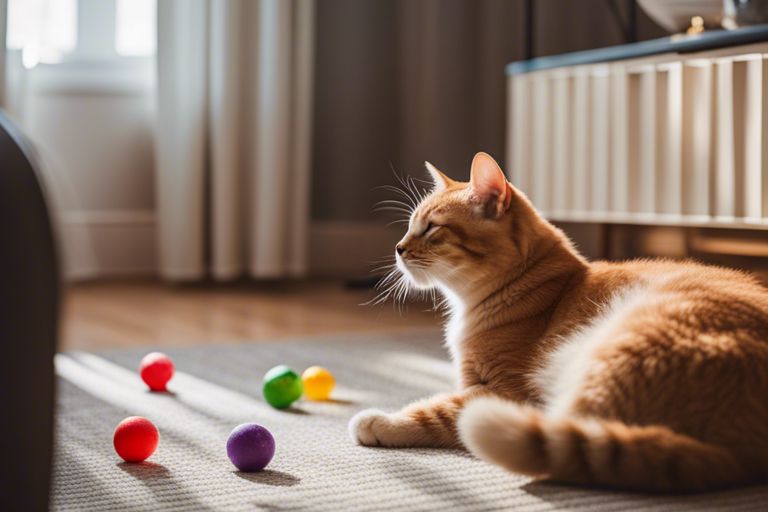
Creating an Engaging Environment
Once again, creating an engaging environment for your cat is important to providing them with the necessary mental and physical stimulation they need for overall well-being. By setting up the right play area, utilizing vertical space, and establishing a routine, you can ensure that your cat stays active and healthy.
Setting Up an Indoor Play Area
Creating a designated indoor play area for your cat allows them to have a space where they can engage in various activities. Include toys, scratching posts, and interactive games to keep your cat entertained and mentally stimulated. This area should be spacious enough for them to move around freely and explore different play options.
Using Vertical Space
Vertical space is vital for cats as it mimics their natural climbing and perching behaviors. Consider installing cat trees, shelves, or window perches to provide your feline friend with elevated areas to lounge on. These spaces not only offer a sense of security and ownership for your cat but also encourage exercise through climbing and jumping.
Using vertical space can also help prevent boredom and provide mental stimulation by allowing your cat to observe their surroundings from a higher vantage point.
The Importance of a Routine
Setting a routine for playtime and feeding schedules can greatly benefit your cat’s overall health and well-being. Cats thrive on routine and predictability, so establishing set times for play, meals, and rest can help reduce stress and anxiety in your pet. Consistency in daily activities also helps strengthen the bond between you and your feline companion.
The Importance of a Routine
Having a consistent routine in place ensures that your cat gets the necessary physical and mental stimulation they need on a regular basis. By incorporating playtime, feeding times, and rest periods into their daily schedule, you can help your cat feel secure, happy, and fulfilled.
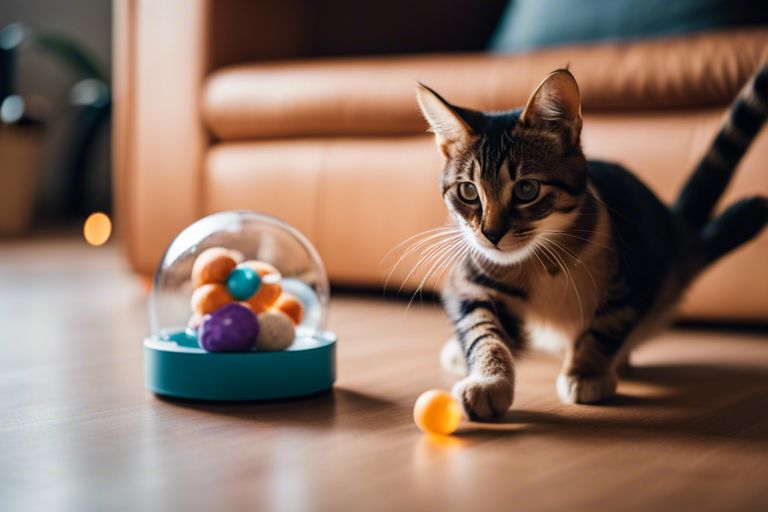
Safety and Precautions
Recognizing Your Cat’s Limits
On occasion, some cats may not be as enthusiastic about playtime or exercise, and it’s crucial to recognize and respect their limits. Signs that your cat may be feeling overwhelmed or stressed include flattened ears, dilated pupils, or hissing. If you notice any of these signs, give your cat space and time to relax.
Safe Toys and Equipment
One of the most critical aspects of ensuring your cat’s safety during playtime is providing them with appropriate toys and equipment. Opt for toys specifically designed for cats to prevent any hazards such as small parts that could be swallowed or strings that could pose a choking risk. Additionally, ensure that any climbing structures or perches are stable and secure to prevent accidents.
Cats can be curious and mischievous, so it’s important to regularly inspect their toys and equipment for any signs of wear and tear. Replace any damaged items to prevent your cat from ingesting small pieces or getting injured during playtime.
Understanding Your Cat’s Health Needs
Needs
Understanding Your Cat’s Health Needs
Toys
Summing up
Taking this into account, regular playtime and exercise are important for your cat’s physical and mental well-being. By engaging in interactive play sessions and providing opportunities for your cat to stay active, you can help prevent obesity, reduce stress and anxiety, and strengthen the bond between you and your furry companion. Additionally, regular exercise can also prevent behavioral issues and promote a healthier lifestyle for your cat.
Overall, incorporating playtime and exercise into your cat’s daily routine is crucial for their overall health and happiness. So, make sure to set aside time each day to engage your cat in fun and stimulating activities to keep them physically and mentally stimulated. Your cat will thank you for it with their energetic and playful spirits!
FAQ
Q: Why is regular playtime and exercise important for cats?
A: Regular playtime and exercise are crucial for cats to maintain a healthy weight, mental stimulation, muscle tone, and overall well-being.
Q: How often should I engage my cat in playtime?
A: It is recommended to engage your cat in playtime at least once or twice a day for about 10-15 minutes each session.
Q: What are some benefits of interactive play for cats?
A: Interactive play helps strengthen the bond between you and your cat, reduces behavior issues, relieves stress, and prevents boredom.
Q: What are some popular cat toys for playtime?
A: Popular cat toys for playtime include feather wands, laser pointers, interactive treat dispensers, crinkle balls, and catnip toys.
Q: How can I encourage my cat to exercise more?
A: You can encourage your cat to exercise more by introducing new toys regularly, creating a stimulating environment, incorporating climbing structures, and using puzzle feeders for mental stimulation.
